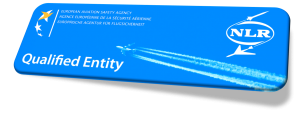The European Air Safety Agency (EASA) accredited NLR to handle complex assignments.
Since 2002, the European Air Safety Agency (EASA) has been advising the European Commission on regulations to improve air safety. EASA also enforces these laws and regulations. But EASA cannot do this work alone, partly because its mandate is too broad and the technical issues are too complex at times. That is why the agency sometimes contracts third parties to provide technical support, but also to carry out full certification procedures.
NLR was issued an EASA accreditation at the end of 2013, confirming its status as a ‘qualified entity’, which means we have the necessary expertise to handle ad-hoc assignments for EASA.
There are two ways EASA can call on NLR or, more specifically, a select part of our workforce that has undergone a rigorous EASA audit. Firstly, EASA can contract NLR to take charge of an entire certification procedure. This does not necessarily imply that we conduct tests, but it does mean, for instance, that we closely scrutinize test results for a new component that is to be added to a helicopter that a manufacturer wants to sell on the European market. If NLR concludes that the tests have been properly executed and the results are satisfactory, an EASA certificate can be issued.
Secondly, EASA can call on NLR’s specific expertise to deal with its own certification assignments. These full certification procedures and the related expertise are classified in specific categories. The first is ‘product certification’, an umbrella term that covers flight tests as well as smaller aircraft components. The second is ‘ATM-ANS’, which stands for ‘air traffic management-air navigation services’, covering all air traffic control systems and processes. And then there is the ‘flight standards’ category, which includes simulators, pilot training and the like.
NLR underwent a stringent audit of its knowledge and expertise before accreditation was granted, consolidating our status as a centre of excellence in the areas of certification, regulations and flight safety.

